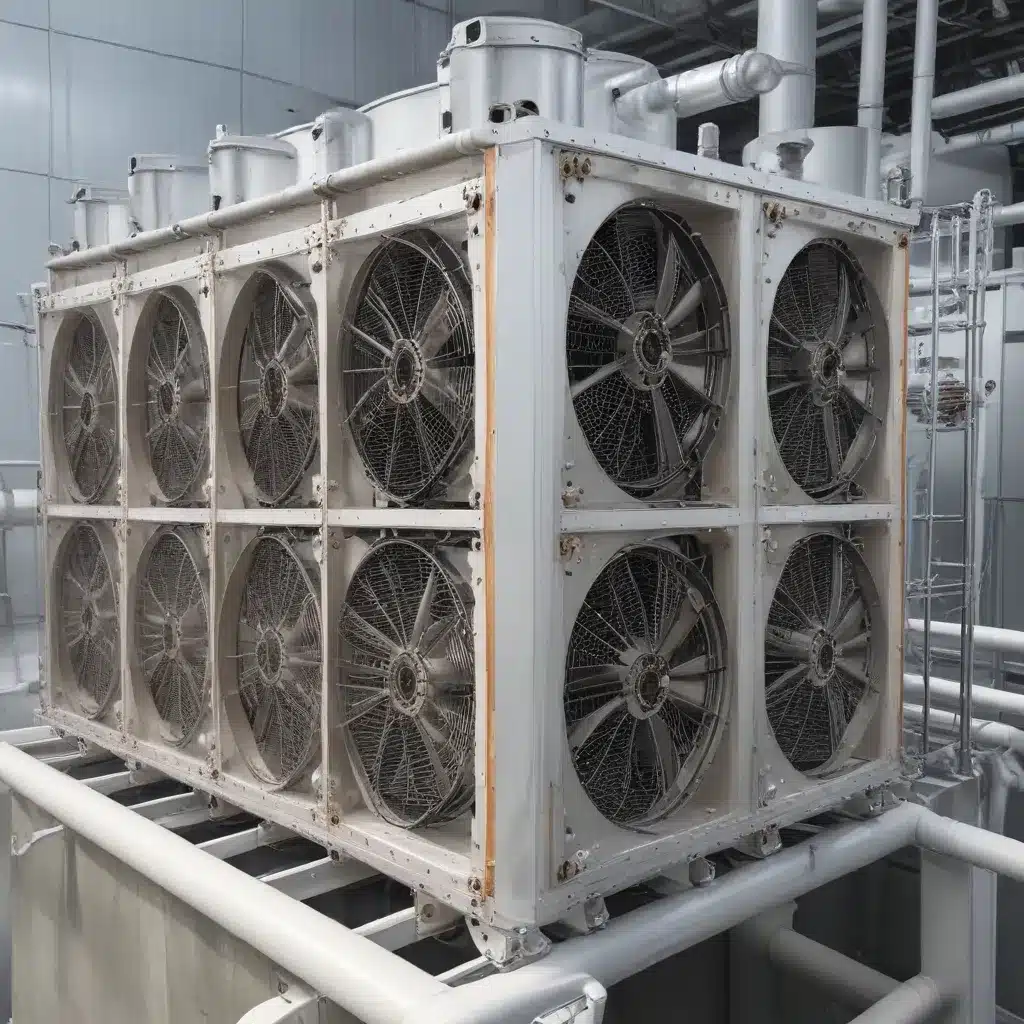
In the dynamic world of industrial operations, effective thermal management is crucial for ensuring the longevity, reliability, and performance of mission-critical equipment. One of the key components in this pursuit is the air-cooled heat exchanger, a versatile and robust solution that plays a pivotal role in maintaining optimal temperatures across a wide range of applications, from manufacturing facilities to outdoor enclosures.
Navigating the Challenges of Harsh Environments
Air-cooled heat exchangers are often called upon to operate in the most demanding conditions, where factors like extreme temperatures, dust, moisture, and corrosive elements can pose significant threats to their performance and longevity. Designing these heat exchangers to withstand such harsh environments is a crucial engineering challenge, requiring a deep understanding of the relevant thermal principles and the practical considerations that come into play.
Addressing Thermal Performance in Extreme Temperatures
One of the primary concerns when deploying air-cooled heat exchangers in harsh environments is their ability to maintain efficient heat transfer across a wide range of ambient temperatures. In regions with scorching summers or freezing winters, the heat exchanger must be engineered to cope with these temperature extremes without compromising its cooling capacity.
This can be achieved through innovative design features, such as the incorporation of high-performance fin materials that optimize heat dissipation, or the use of adjustable fan systems that can modulate airflow based on the prevailing conditions. Additionally, the strategic placement of the heat exchanger within the enclosure, along with the implementation of insulation and shielding measures, can play a crucial role in maintaining thermal stability.
Protecting Against Environmental Contaminants
Another key challenge in harsh environments is the risk of exposure to various contaminants, such as dust, dirt, moisture, and even corrosive chemicals. These elements can compromise the heat exchanger’s performance and even lead to premature failure if not adequately addressed.
Robust housing and enclosure designs, incorporating materials like stainless steel 304 or powder-coated steel, provide a vital line of defense against environmental intrusion. Sloped top designs can effectively shed water and prevent pooling, while physical barriers and sealing mechanisms isolate the internal air circuit from the external ambient conditions, minimizing the risk of contaminant ingress.
Optimizing Airflow and Heat Transfer
Efficient airflow management is a hallmark of well-designed air-cooled heat exchangers, especially in harsh environments where unobstructed airflow can be a challenge. Thoughtful fan placement and duct design ensures that hot air is effectively drawn from the top of the enclosure and replaced with cool air below the components, promoting optimal heat transfer.
In addition, the incorporation of adjustable mechanical thermostats enables precise temperature control by regulating the coolant flow, ultimately minimizing energy consumption and enhancing the overall system efficiency.
Maintenance and Reliability Considerations
Ensuring the long-term reliability of air-cooled heat exchangers in harsh environments is a crucial factor in maintaining uninterrupted operations. Proactive maintenance and service practices play a vital role in maximizing the heat exchanger’s lifespan and preventing unexpected breakdowns.
Preventive Maintenance Strategies
Regularly scheduled inspections and maintenance routines are essential for identifying and addressing potential issues before they escalate. This includes cleaning the heat exchanger fins and coils to maintain optimal airflow, as well as checking for any signs of corrosion or wear that may compromise the system’s performance.
Hydronic connectors that support quick connections to hoses or pipes can greatly facilitate the maintenance process, reducing downtime and enabling seamless servicing.
Enhancing Reliability Through Design
In addition to preventive maintenance, the inherent design of the air-cooled heat exchanger can significantly contribute to its long-term reliability. Features like durable housing materials, redundant fan systems, and integrated condensation drainage mechanisms help mitigate the impact of harsh environmental conditions and ensure the heat exchanger’s resilience.
By addressing both maintenance protocols and design-level considerations, air-cooled heat exchanger users can maximize the operational lifespan of their critical thermal management equipment, even in the most demanding industrial settings.
Applications and Advantages of Air-Cooled Heat Exchangers
Air-cooled heat exchangers have a wide range of applications across various industries, from manufacturing and process control to telecommunications and renewable energy. Their versatility and adaptability make them a preferred choice for many organizations seeking reliable thermal management solutions.
Industrial Manufacturing and Processing
In manufacturing facilities, air-cooled heat exchangers play a crucial role in maintaining optimal operating temperatures for sensitive electronic components, control systems, and other mission-critical equipment. Their ability to withstand harsh ambient conditions, such as high temperatures, dust, and moisture, makes them an invaluable asset in these environments.
Outdoor Enclosures and Telecommunications
Air-cooled heat exchangers are also extensively used in outdoor enclosures, telecommunication shelters, and other remote or unattended facilities. Their ability to isolate the internal air circuit from the external environment ensures that sensitive electronics are protected from the elements, while the efficient cooling capabilities help maintain optimal performance.
Renewable Energy Applications
In the renewable energy sector, air-cooled heat exchangers are employed to regulate the temperature of critical components in solar inverters, wind turbine controllers, and other green energy systems. Their rugged construction and reliable operation contribute to the overall efficiency and longevity of these renewable energy solutions.
Conclusion
As industries continue to push the boundaries of their operations, the demand for robust and adaptable thermal management solutions has never been greater. Air-cooled heat exchangers, with their ability to excel in harsh environmental conditions, stand as a cornerstone of this evolving landscape, offering unparalleled thermal control and reliability.
By leveraging the latest advancements in design, materials, and maintenance practices, air-cooled heat exchanger users can optimize their thermal management strategies, ensuring their mission-critical equipment operates at peak performance, even in the most challenging environments. The future of industrial thermal management lies in the continued innovation and refinement of these versatile and essential heat exchangers.

